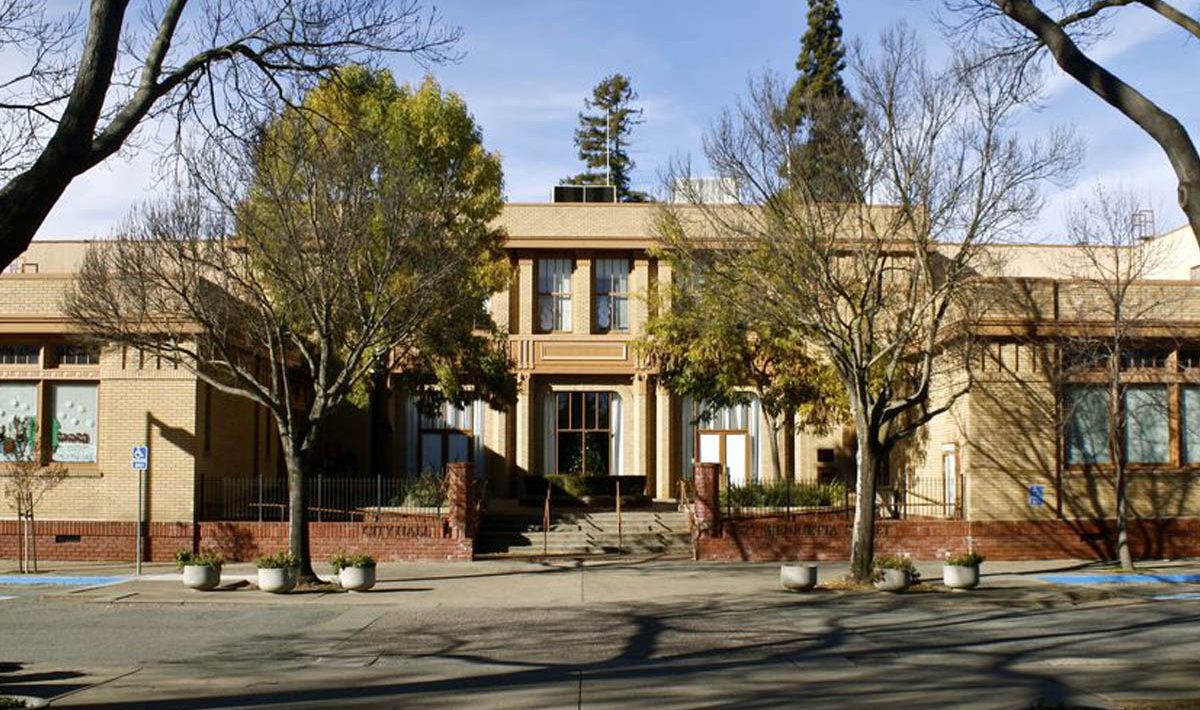MARTINEZ, Calif. – The City Council’s Infrastructure Subcommittee authorized staff to go ahead with research on prices and methods to update the energy and security elements of City Hall.
City Manager Eric Figueroa had told Subcommittee members Lara DeLaney and Mark Ross that City Staff is pressed for time, asked if this is the right time to pursue the line of inquiry. “We want to get the most ‘green’ bang for our buck and to be sure that users pay for services they receive from the city,” Figueroa remarked.
The City already works with MCE, an energy cooperative that provides local green energy. There are Light Green and Deep Green levels of service available. Currently, the City is subscribed to Light Green, which means that 60 percent of the energy comes from “green” sources,” according to Michael Chandler, deputy director of Administrative Services. He said Deep Green would be entirely from green sources and cost the city about $161,000 more annually.
Councilmember Lara DeLaney said she wants the entire city to be Deep Green. “We can look for ways to ameliorate the costs,” she said. Councilmember Mark Ross agreed, saying the City could start with City Hall and then phase in the whole city.
They were talking about various publicly powered services, such as street lighting, which the city has begun switching to LED in Ignacio Plaza.
At City Hall, the HVAC system installed in 1994 has needed increasingly more service and is not as efficient as modern systems will cost an estimated $950,000 to replace. Windows and lighting should be replaced too Chandler said. All of that is estimated at $1.1 million and could be financed at zero percent by PG&E, with the cost savings paying it off he said.
“Would the new HVAC system be natural gas?” asked Ross. Public Works Director Dave Scola said, “No.” That satisfied Ross, but DeLaney asked for more information about the heat source. Scale explained that it works in reverse of the way an air conditioner with a coil and compressor would function.
Reportedly the roof, installed at the same time as the HVAC is ready for replacement too. Scola said there are newer roofing bituminous products which are “seamless.” The sections are vulcanized (heated) to seal the sections together and reportedly it moves with the temperature.
After the meeting, Scola said the roof had only two leaks during the heavy winter last year, but a newer roof would be more energy efficient. Ross also asked Scola to get the facts on a foam roof.
Security is also on the list of recommended improvements. There should be a door separating upstairs city administrative back offices from recreational services, which must be accessible to the public. An identification key-card system is needed for access to secure areas. The Police Evidence Facility glass should be bulletproof because it is rather isolated. In addition, there are a number of small fixes needed around the building. The bill for general fix-up is estimated at $192,000, according to Chandler’s report.
Both DeLaney and Ross gave the green light to security improvements, and Figueroa said the staff’s investigation report on these improvements would be ready in four to six weeks.
At the end of the meeting, there was a discussion of water meter replacements. There are 10,000 meters in the city, and there are more accurate “auto-read” meters on the market, but plumbing may need to be done, even if they fit into the existing boxes meter boxes, according to Scola.
There is a certain amount of lost water reported every year, based on state cost recovery estimates. The probable causes are leaks, the treatment process, evaporation and the meter calculations of the amount of water used. However, Scola said it would is not easy to isolate the costs and attribute them to certain sources.
The Subcommittee members said they liked the idea of increased efficiency, and need more information.





